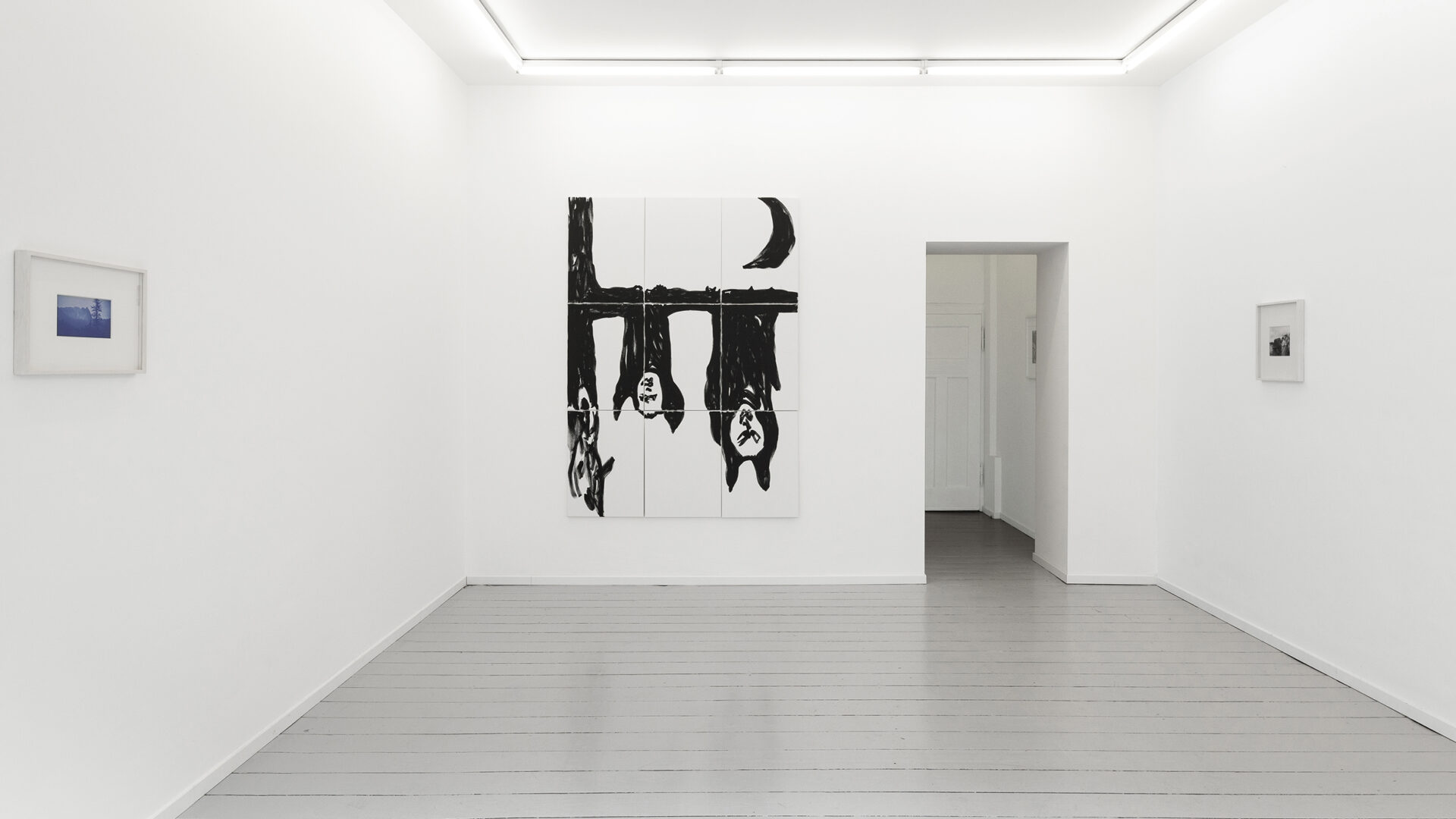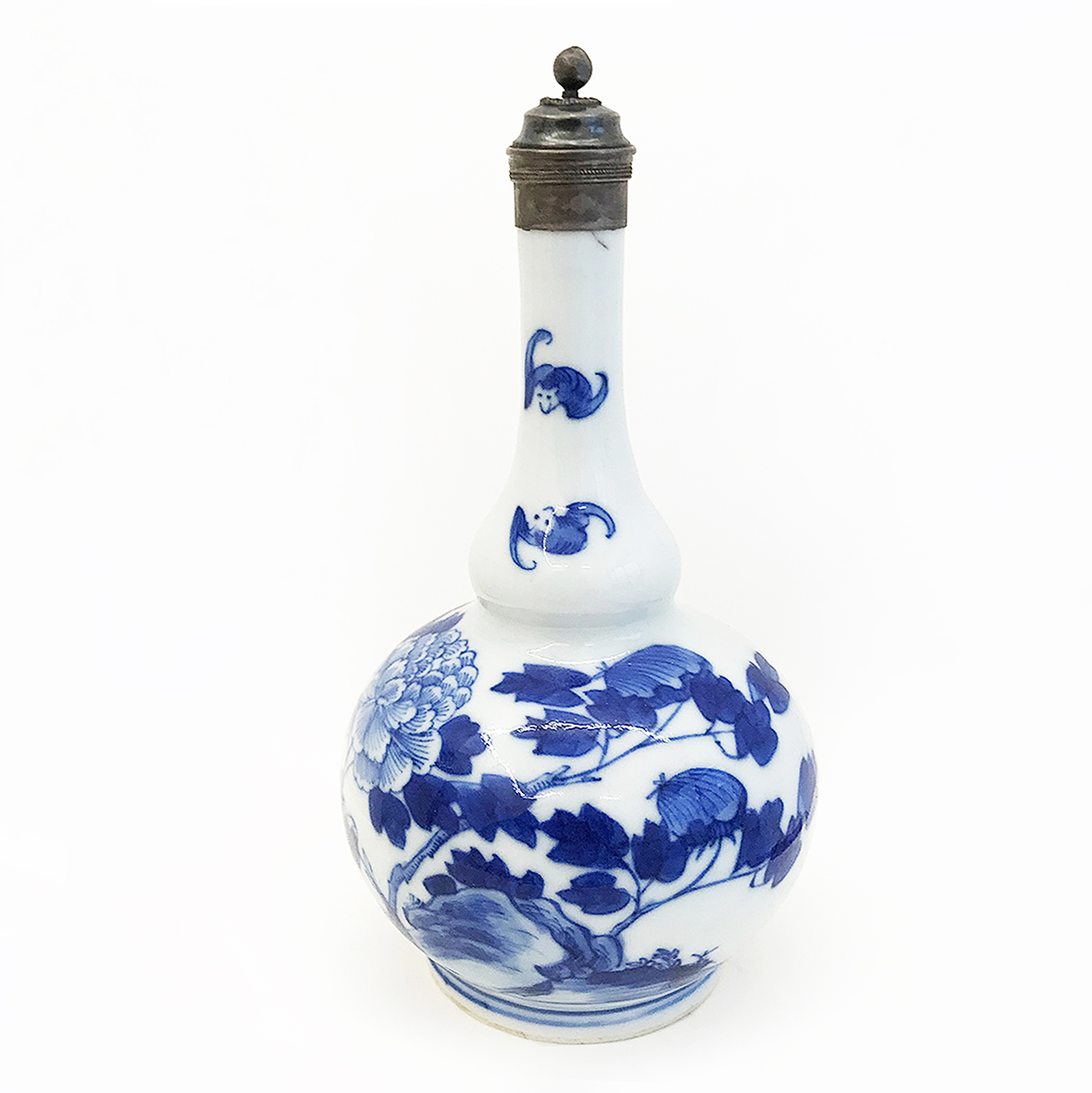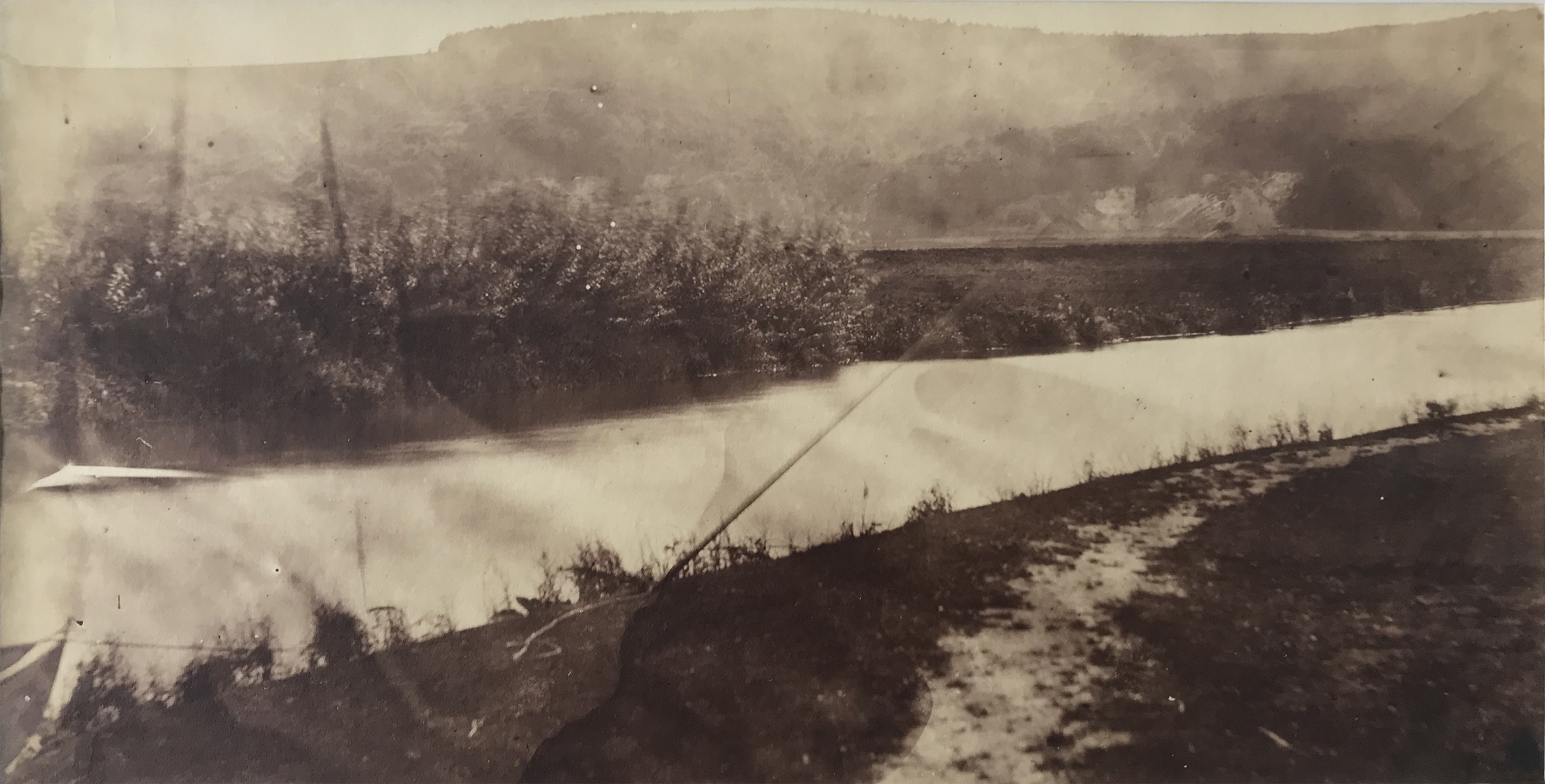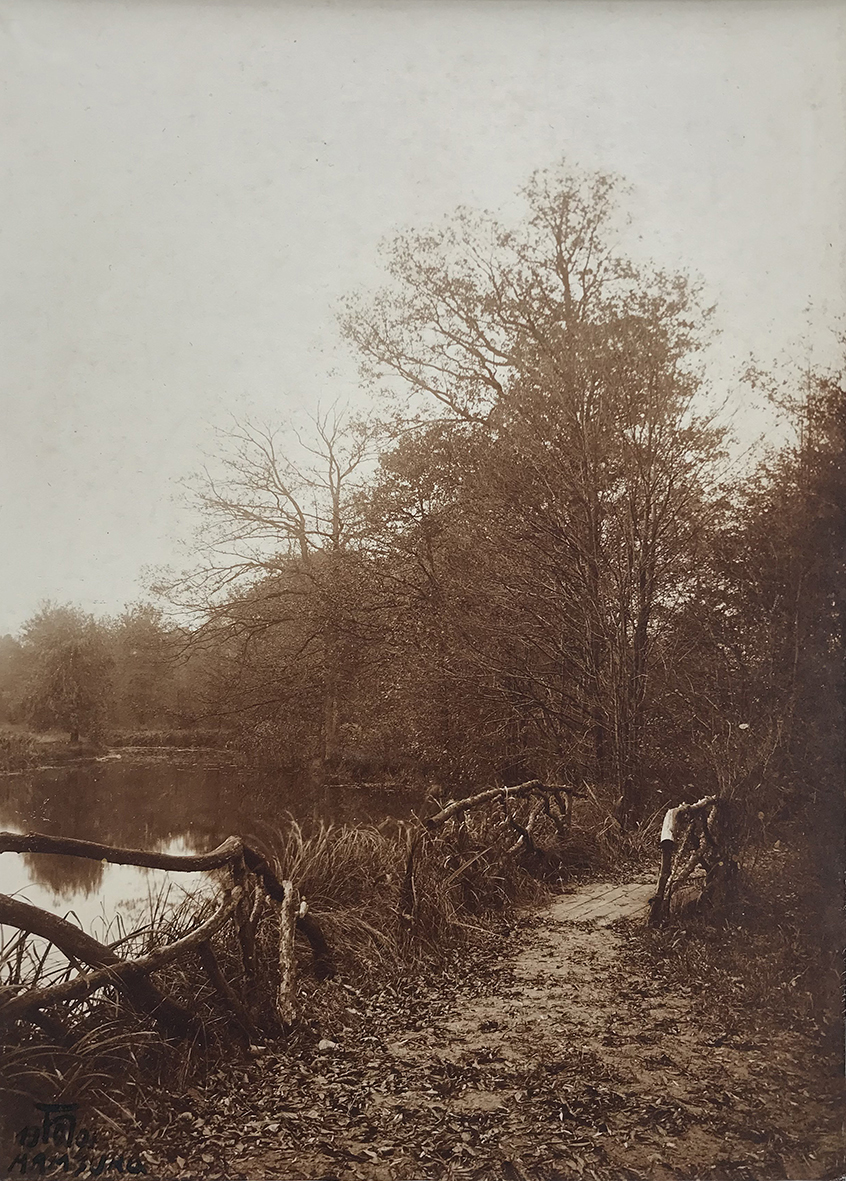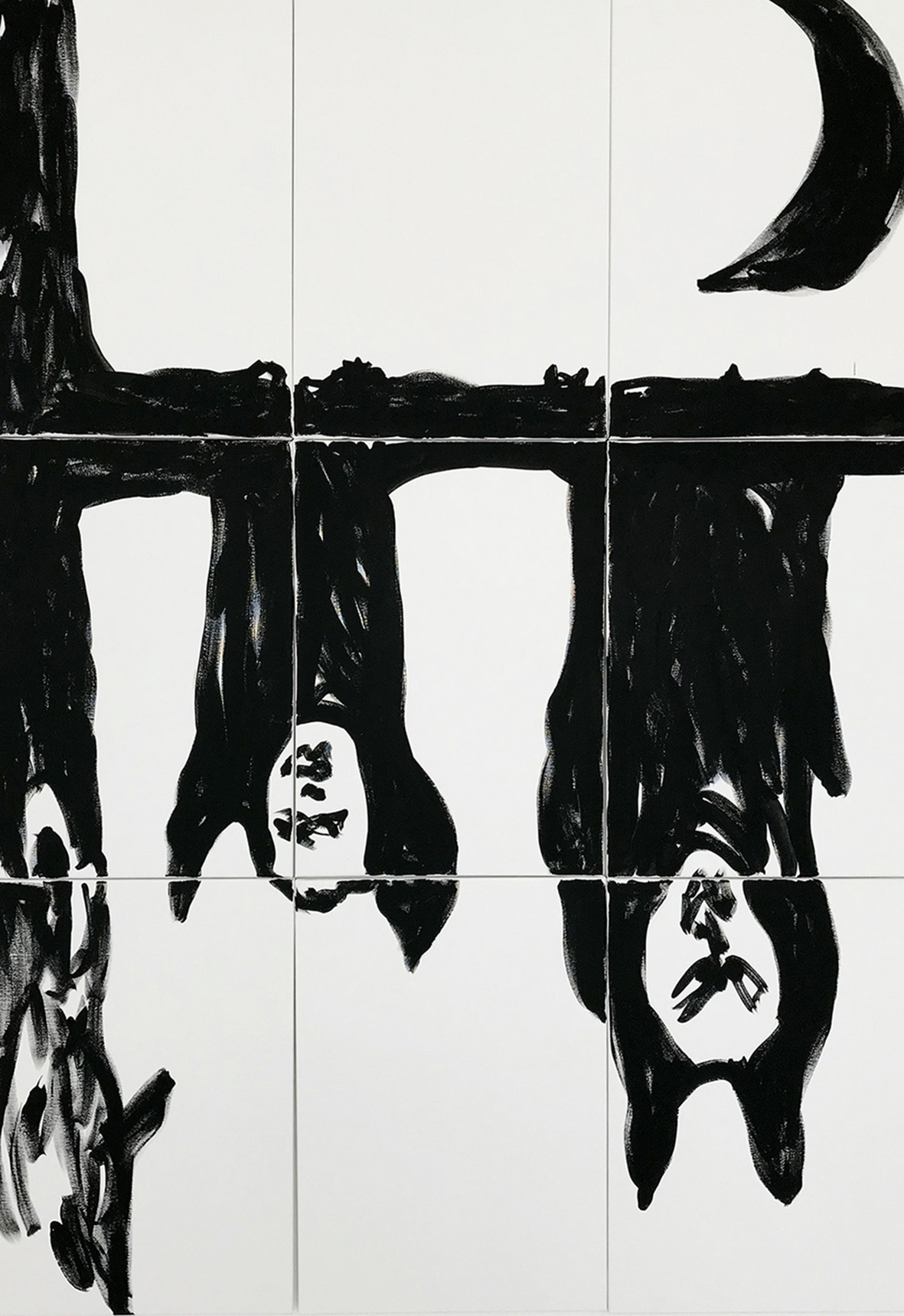Bats and Woodlands
Among all the animals that still exist today, and which are the subject of human imagination, the bat occupies a peculiar position. It probably owes this primarily to the fact that, although it is a mammal, it can fly like a bird; secondly, that its appearance is tied to twilight and night time; and thirdly, to the fact that its respective appearance and disappearance is completely silent, but its whereabouts during the day remain mysterious, and thus its existence and birth has something mysterious or even eerie about it. All this brings with it the fact that this animal is again and again associated with demons and spirits. (Paul Wirtz 1948 – translated freely)
The ethnologist Paul Wirtz describes a typical Western perception and meaning of the bat, which contrasts with the significance of the bat in East Asia. In China and Japan the bat symbolizes happiness and wisdom. In Mandarin the sign for bat, „Fu“ also means luck. Two bats stand for „shuang-fu“ double luck.
The artist Dong Xifang plays with these different cultural perspectives. In her consistently black-and-white paintings, she combines the artistic traditions of both cultural areas. Her work „Bats“, 2 bats hanging upside down on a branch, painted with a generous style, lets the associations, depending on one‘s own socialization, diverge widely. The painting „O-tanzaku – two bats“ from the late Edo period by the Japanese painter Kishi Renzan already points in its delicacy and grace to the Asian interpretation of the bat.
The symbolism of the forest, the bat‘s primary habitat, on the other hand, is a connecting link in European and East Asian art and culture. In both cultures the trees stand for the eternal cycle of life. So it is no coincidence that Siddharta Gautama is sitting under the Bodhi tree. Elm and ash, Ask and Embla are the first people in Germanic mythology. The gods created them from two washed up woods. Today’s forests are shaped by human intention and planning. The wild forests of mythological tales, untouched by man, do not exist anymore. Nevertheless, we hold on to the romanticizing view, as did the Hamburg photographers Gebrüder Hofmeister, the British photographers Samuel Bourne and James Baker-Pyne in the 19th century. The beauty of the forests fascinated the artists of this era. Whether at home or on expeditions they fed the desire of people for the supposed freedom and beauty of nature.
Basedonart shows: Samuel Bourne, Tancrede Dumas, Hubert Fischer, Hofmeister brothers, James Baker-Pyne, Kishi Renzan, Dong Xifang, photographs of unknown origin and a selection of antique Chinese and Japanese objects.
Unter allen heute noch vorkommenden Tieren, mit denen sich die menschliche Phan- tasie befasst, nimmt die Fledermaus eine eigenartige Stellung ein. Sie verdankt die wohl in erster Linie dem Umstand, daß sie, obwohl sie ein Säugetier ist, wie ein Vogel fliegen kann, zweitens, daß ihr Auftreten an die Dämmerung und Nachtzeit gebunden ist und drittens der Tatsache, daß ihr jeweiliges Erscheinen und Verschwinden sich vollkommen geräuschlos vollzieht, ihr Verbleiben tagsüber aber rätselhaft bleibt und somit ihr Dasein und gebären etwas rätselhaftes oder gar Unheimliches an sich hat. Das alles bringt es mit sich, daß dieses Tier immer und immer wieder mit Vorliebe mit Dämonen und Geistern in Zusammenhang gebracht wird. Paul Wirtz 1948
Der Ethnologe Paul Wirtz beschreibt eine typisch westliche Wahrnehmung und Bedeu- tung der Fledermaus. Im Gegensatz dazu steht ihre Bedeutung im ostasiatischen Raum. In China und Japan symbolisiert die Fledermaus Glück und Weisheit. In Mandarin bedeutet das Zeichen für Fledermaus, „Fu“ gleichzeitig auch Glück. Zwei Fledermäuse stehen für „shuang-fu“ doppeltes Glück. Die Künstlerin Dong Xifang spielt mit diesen unterschiedli- chen kulturell- bedingten Perspektiven. Sie vereint in ihrer konsequent schwarz-weiß ge- haltenen Malerei die künstlerischen Traditionen beider Kulturkreise. Ihre mit großzügigem Duktus gemalte Arbeit „Bats“, 2 Fledermäuse mit dem Kopf nach unten an einem Ast hängend, lässt die Assoziationen, je nach eigener Sozialisation, weit auseinandergehen. Die Malerei „O-tanzaku – zwei Fledermäuse“ aus der späten Edo Periode von dem japa- nischen Maler Kishi Renzan – deutet schon in ihrer Zartheit und Anmut auf die asiatische Deutung der Fledermaus.
Die Symbolik des Waldes hingegen, dem primären Lebensraum der Fledermaus, ist ein verbindendes Glied in der europäischen und ostasiatischen Kunst und Kultur. In beiden Kulturkreisen stehen die Bäume für den ewigen Kreislauf des Lebens. So sitzt Siddharta Gautama nicht von ungefähr unter dem Bodhibaum. Ulme und Esche, Ask und Embla sind die ersten Menschen in der germanischen Mythologie. Sie wurden von den Göttern aus zwei angeschwemmten Hölzern geschaffen. Die heutigen Wälder sind in der Regel von menschlichen Wollen und Planen geprägte Kulturphänomene und nicht mehr der wilde sowie vom Menschen unberührte Wald der mythologischen Erzählungen. Dennoch bewahren wir uns den romantisierenden Blick, wie auch schon die Hamburger Fotogra- fen Gebrüder Hofmeister, die britischen Fotografen Samuel Bourne und James Baker- Pyne im 19. Jahrhundert. Die Künstler dieser Epoche zeigten sich fasziniert von der Schön- heit der Wälder und bedienten so, ob zu Hause oder auf Expeditionen, die Sehnsüchte der Menschen nach der vermeintlichen Freiheit und Schönheit der Natur.
Basedonart zeigt: Samuel Bourne, Tancrede Dumas, Hubert Fischer, Gebrüder Hofmeister, James Baker-Pyne, Kishi Renzan, Dong Xifan, Fotografien unbekannter Herkunft und eine Auswahl von antiken chinesischen und japanischen Objekten.
